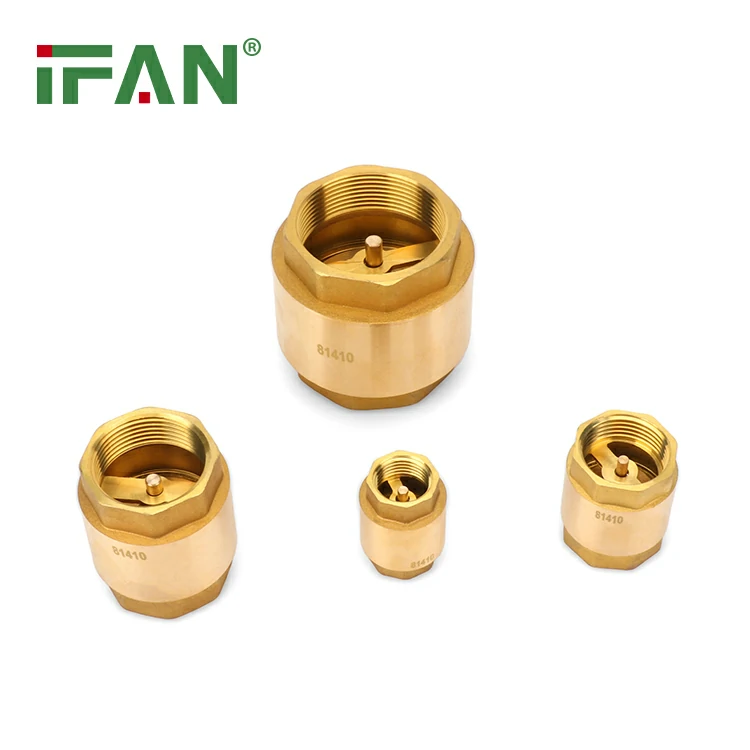Brass check valves are essential for preventing backflow and protecting plumbing, heating, and industrial systems. Proper installation ensures optimal performance and longevity. Here are the key locations where a brass check valve should be installed:
1. Pump Discharge Lines
- Purpose: Prevents water from flowing backward into the pump when it shuts off (avoiding damage and “water hammer”).
- Example: Installed after a sump pump, well pump, or booster pump.
2. Water Heater Inlet
- Purpose: Stops hot water from flowing back into the cold water supply.
- Example: Used in tankless water heaters or boiler systems.
3. Irrigation Systems
- Purpose: Keeps contaminated water (from sprinklers or hoses) from siphoning back into the clean water supply.
- Example: Installed after the backflow preventer in lawn sprinkler systems.
4. Hydronic Heating Systems
- Purpose: Ensures hot water flows in one direction, improving efficiency.
- Example: Used in boiler feed lines or radiant heating systems.
5. Compressed Air & Gas Lines
- Purpose: Prevents air/gas backflow, protecting compressors and regulators.
- Example: Installed near air compressors or propane/Natural Gas (NG) systems.
Installation Tips:
✔ Orientation Matters: Most brass check valves must be installed in the correct vertical or horizontal position (check manufacturer specs).
✔ Avoid Upstream Obstructions: Ensure no elbows or valves are too close to the inlet (can disrupt flow and cause premature wear).
✔ Use Thread Sealant: Apply Teflon tape or pipe dope to ensure a leak-free seal.
✔ Regular Inspection: Check for debris buildup, corrosion, or sticking discs.
Where NOT to Install a Brass Check Valve:
❌ On systems with high sediment (can clog the valve).
❌ In high-vibration areas (can weaken brass over time).
❌ Where freezing is possible (water trapped inside can crack the valve).
View more:https://www.ifanfittings.com/


